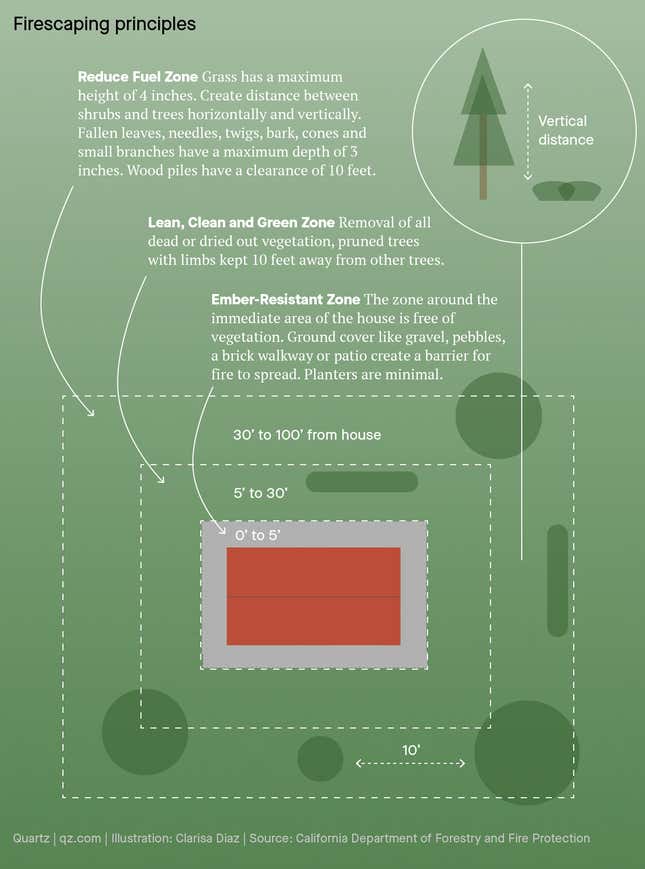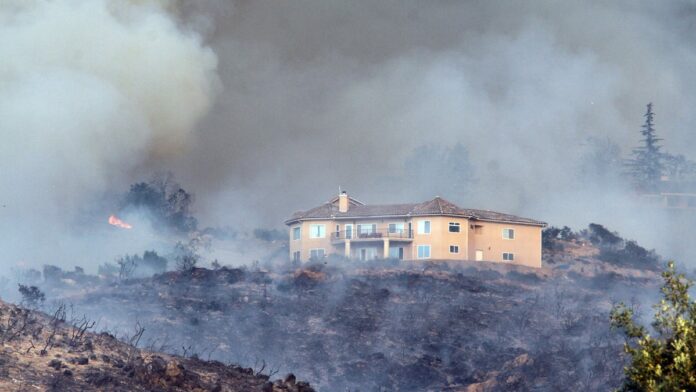While the damage was devastating, one home remained intact after wildfires ravaged through Lahaina in Hawaii this summer. The historically preserved home on Front Street has a protective metal roof, but it also has landscaping that gave the house its best chance to not catch fire. As wildfires become more frequent and extreme, more homeowners are seeking “firescaping,” landscaping that creates defensible space against fires. The concept is something California residents know all too well, where homeowners in high-risk areas must follow regulations to maintain their properties each year in preparation for wildfire season.
The California Department of Forestry and Fire Protection (CALFIRE) calls this
buffer between a building and grass, trees, shrubs, and wild vegetation surrounding it defensible space. It is needed to slow or stop the spread of wildfire, which also helps protect a home from catching fire—either from embers, direct flame contact or radiant heat.
Here are the basics of firescaping:

Selective plants and spacing
Not only does firescaping include maintaining vegetation on a property, but it also involves selecting plants which may be more fire-resistant. What makes a plant more resistant to fire depends on both location and environmental conditions. A well-watered area, for instance, may allow a plant to be more fire-resistant than the same plant in a drought-prone area.

A plant with higher moisture content in the leaves, like daylily, foxglove, red twig dogwood, blue elderberry, is more resistant to fire than plants with more waxes, oils, and resins like hoya, pine, sunflower—which are more likely to be flammable and release more heat when they burn.
A healthy landscape is less vulnerable to fire. That means regularly removing fallen leaves and branches, and pruning trees and shrubs. The landscape should also be well irrigated but if that’s not possible, the design can focus on features that do not require much water such as desert plants and rock gardens.


